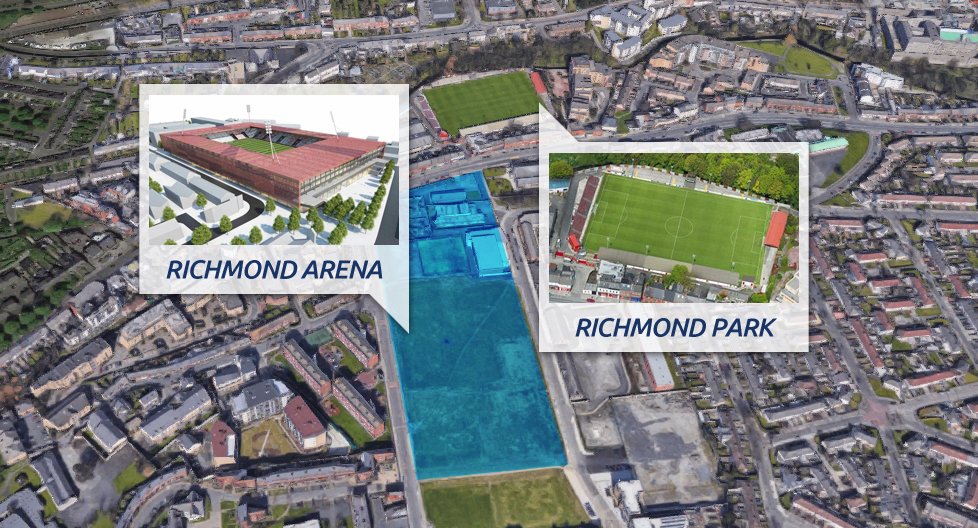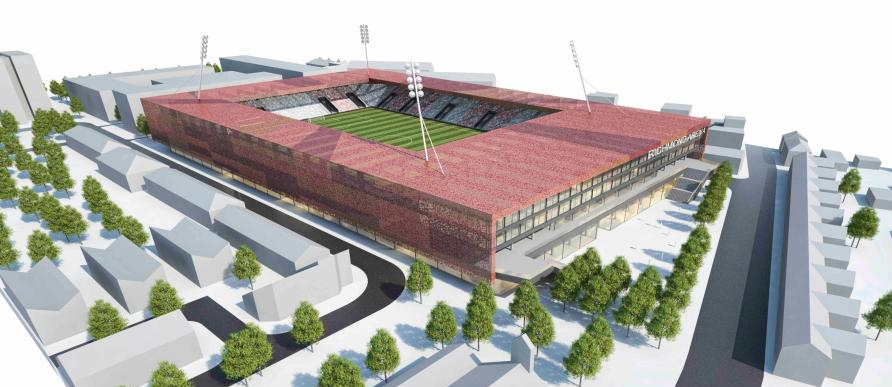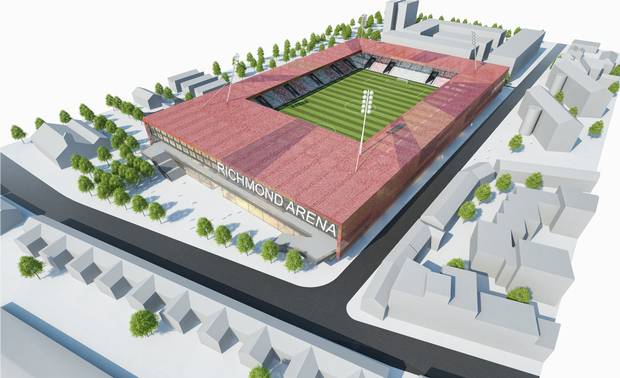New design: Second best stadium for Dublin
source: StadiumDB.com; author: michał
 OK, we're not including Croke Park when considering the planned Richmond Arena Dublin's second best. But for domestic football it could actually become a game-changer, while Croke Park is still far too much.
OK, we're not including Croke Park when considering the planned Richmond Arena Dublin's second best. But for domestic football it could actually become a game-changer, while Croke Park is still far too much.
Advertisement
Irish football league hasn't enjoyed great popularity or infrastructure in recent decades, as proven each time Irish teams fight for the Champions League. Not only being knocked out early is a problem, but also not being able to play at home.
This was also the case for St. Patrick's Athletic and their 2014 Champions League effort. The team was forced to play at Tallaght Park as their Richmond Park didn't comply with regulations. Now St. Pat's have found a partner willing to make the long-awaited difference and create what could become the best league stadium in Ireland, second only to the national Aviva Stadium.

Second largest football stadium in Dublin would be built very close to the existing Richmond Park, home of St. Patrick's Athletic. Though the site lies just across the street, it's located in a different district, Inchicore. It would become part of a larger revitalisation scheme, aimed at bringing high number of residential units and commercial outlets in the place of partly deteriorated leisure areas.

The stadium would offer one underground level, dedicated to 350 parking spaces, addressing lack of open-air parking site nearby. Ground floor would mostly be covered by commercial floor spaces, becoming what's called the new “retail town centre”. Only on top of these two levels the stadium woud actually be built.

With 12,000 seats (100% under cover) it would meet all requirements for UEFA Category 3, considered sufficient for St. Patrick's Athletic. StadiumDB.com understands there would be an option to raise category to Cat 4, should such need arise.
If the concept of stadium built above ground level seems familiar with new Swiss stadiums, that's not without merit. The investment would come from HRS, who have delivered similar mixed-use projects in Switzerland, to name just Tissot Arena. Such solutions seems in line with Dublin's limited space for development.
Depending on planning permission proceedings, the stadium could see groundbreaking in 2019 or 2020, from which point HRS could deliver it successfully in 24 months.
Advertisement

 StadiumDB
StadiumDB